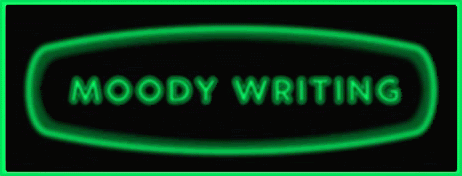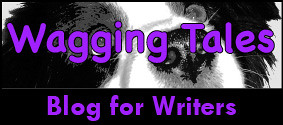We’ve all read stories where we get a weird creepy
feeling even though not much is happening on the page. No monsters jumping out,
maybe just someone hears a noise, sees something out of the corner of their eye
and it’s enough to give you the willies.
But when you try to write a scene full of psychological
horror it’s not as simple as putting the character in a spooky environment and letting
the reader’s imagination do the rest.
You know from real life that you can get the
heebiegeebies for no good reason.
Alone in the house, a creak from upstairs, new
underpants required.
But in fiction trying to foster that vibe out of simply
describing its presence is like telling someone you were alone in your house
and you felt scared. They’ll understand what you mean, but will they feel the fear?
Now tell them your ex rang you and said he was
going to kill you, and then you heard a creak from upstairs. Even if it turns
out to be as meaningless a creak as the first version of the story, the
possibility it could be something real is enough to engender a chill in the
person listening.
A direct threat in a story — a monster attacking, a
killer in a frenzy, a character hanging from a ledge — is easy to understand
both for the reader and the writer. If you want to establish a dangerous
situation all you have to do is write a character in obvious danger.
An indirect threat isn’t so easy to create. By
indirect I mean a sense of unease that crawls up the back of your neck. When it
comes to writing a scene like that it isn’t as straightforward as having the
character act all nervous and jumpy, even though it can feel like that’s what other
writers do, and it seems to work.
But it’s easy to look at an effectively written
scene in isolation and not take into consideration all the other factors adding
to the effect.
By way of example I’m going to use a couple of
scenes from Stephen King’s The Shining
(the book, not the movie).
In the first scene, Jack is in the grounds of the
Overlook Hotel doing his custodial duties of trimming the bushes. There are a
number of large animal-shaped shrubs that he has to smarten up, which he does,
but when he turns round the animals seem to have changed positions, then moved,
then close in on him. And then they’re back to their normal positions.
I’m sure you can see how this scene would be unsettling.
And it is. There’s a definitely a creepy vibe to it. But it is far more about a
man who thinks he’s hallucinating or possibly losing his mind (he’s under a lot
of pressure) than it is scary.
Later on there’s another scene where Jack goes up
to investigate a room in the hotel after his son, Danny, claims to have seen a
woman in there. He finds nothing, but he starts thinking he isn’t alone in
there. Again, this is presented through Jack’s eyes as not being too sure if
what he’s seeing and hearing is real or imagined, and we never actually see
anything, but this scene is terrifying and really makes your skin crawl.
So what makes one scene get under the skin and not
the other? Both are well written and have a definite unsettling vibe to them,
and if anyone can write a good scary scene it’s Stephen King. But there is one big difference between the
two.
In the first one with the topiary, Jack is alone
and freaked out, but his fear is more for his sanity than it is of the bushes
doing him any harm. And the reader is similarly not sure exactly what the
danger is from being jumped on by a bunch of leaves.
With the other scene in the hotel room, it is
preceded by another scene where the son, Danny, goes into the room and he
actually does see what’s in there: a naked dead woman in the bath who gets up
and grabs him...
But while you can see why the scene with the kid is
horrifying, what has that got to do with the later scene with the dad?
The thing is we know when the dad, Jack, goes into
the hotel room that there is something in there. And that makes a big
difference to how we perceive Jack’s nervousness about looking behind the
shower curtain.
That doesn’t mean you have to reveal everything to
the reader before you can scare them, but it helps a lot to make the reader
feel the threat is real.
If the threat is real then the reader will feel
tense even if that threat doesn’t materialise.
Convincing the reader that there is the possibility
of real danger, harm or loss is a complex thing. I can show the monster, or I
can show you what’s left of the monster’s victim, or the effect of the monster
on the locals, or the size of the police presence; or just a news report on in
the background. And after all that it can still turn out the threat wasn’t
real, just a guy in a mask (he would’ve gotten away with it too, if it weren’t
for those pesky kids).
My point is that just because you establish the
level of danger doesn’t mean you narrow the scope of the kind of story it will
be. You can still decide to not reveal specifics of who or what is the source
of the danger, you can reinterpret signs as new information comes to light, and
you can even mislead your audience.
Making it clear there is a real threat
out there in the woods and not just some agitated squirrels will make every
trip into those woods a tense affair, whether it’s a monster hunter with a gun or
a kid chasing butterflies.
If you found this post useful please give it a retweet. Cheers.








































































































16 comments:
I admire people who can write suspenseful scary scenes. Good advice.
You have to set up the scene.
Scooby-Doo reference - nice touch!
This is wonderful advice and very informative. I think I tend to tell the reader too much and hope to convey fear, but it doesn't quite work. One book that did unsettle me was Kiss The Girls by James Patterson. Some scenes in that book made me uncomfortable and made me feel really creeped out. Great post! Thank you for your kind words on my blog. I am really grateful.
Brilliant post, as always. And King is such a master! Who could think up garden animals coming to get you? It's crazy -- and original and awesome. Great explanation of needing to give some evidence to the reader to make psychological horror work. :-)
King is certainly the master of suspense and all kinds on crazy. The examples you used are excellent. Yes, you don't have to be altogether explicit at times...implicit is even scarier.
Apt post for the time of year. Terror is difficult to instill in a reader without actually producing a villain/monster.
I loved the wrap up, lol.
.......dhole
@Susan - always a good sign when I'm reading and get the chills.
@Alex - Scooby Doo, a classic of horror fiction.
@Murees - glad to be of help.
@Lexa - Looking forward to his sequel to The Shining, should be good.
@Denise - there tends to be a lot more going on behind the clockface than is at first apparent.
@Donna - never turn your back on an agitated squirrel...
I am not all that great at creating suspense :(
I envy writers who can spook readers. Honestly, Moody, its an art I hope to master some time in the future.
Love the callback to Scooby Doo there at the end. Good examples here; sharing and bookmarking for future use.
@Rachna - I think suspense is one of the most useful tools for writers in any genre.
@Beverly - Cheers, glad you found it useful.
I loved King's description of the Sun Dog in the short story of the same name. He really has a way with words (sometimes).
@Mike - he could perhaps use a little less of them. His books seem to get longer and longer.
I love to read and watch suspense play out... I'm the gal behind the cushion who cannot turn the movie off, and who reads her Kindle horror novels in the dark, then can't sleep. This post is excellent for seeing how these scene are created, and why they're so effective. Oh, and I giggled at Scooby ref. :D X
My kids love Scooby Doo and I used to be a big fan of King's books as a teenager, but I've grown be about as brave as Shaggy when it comes to things that go bump in the night.
@Shah - Don't look behind you...
@Elise - I like to volunteer to be the one who goes for help.
@mood: LOL I'll be right behind ya.